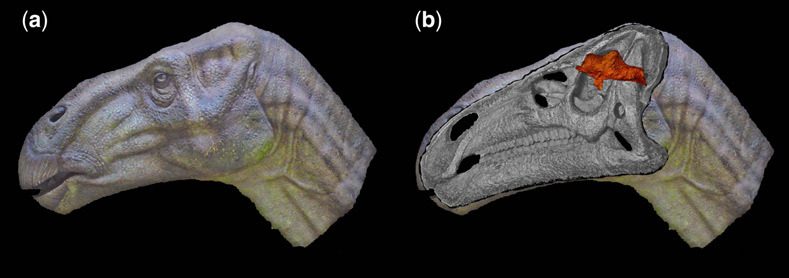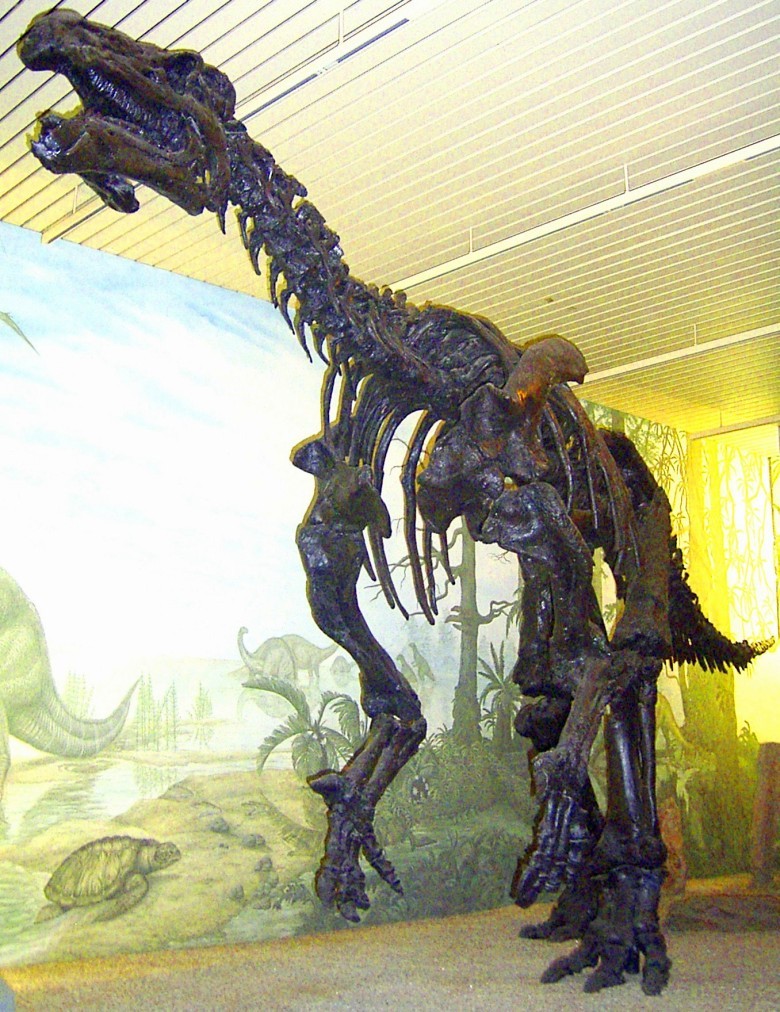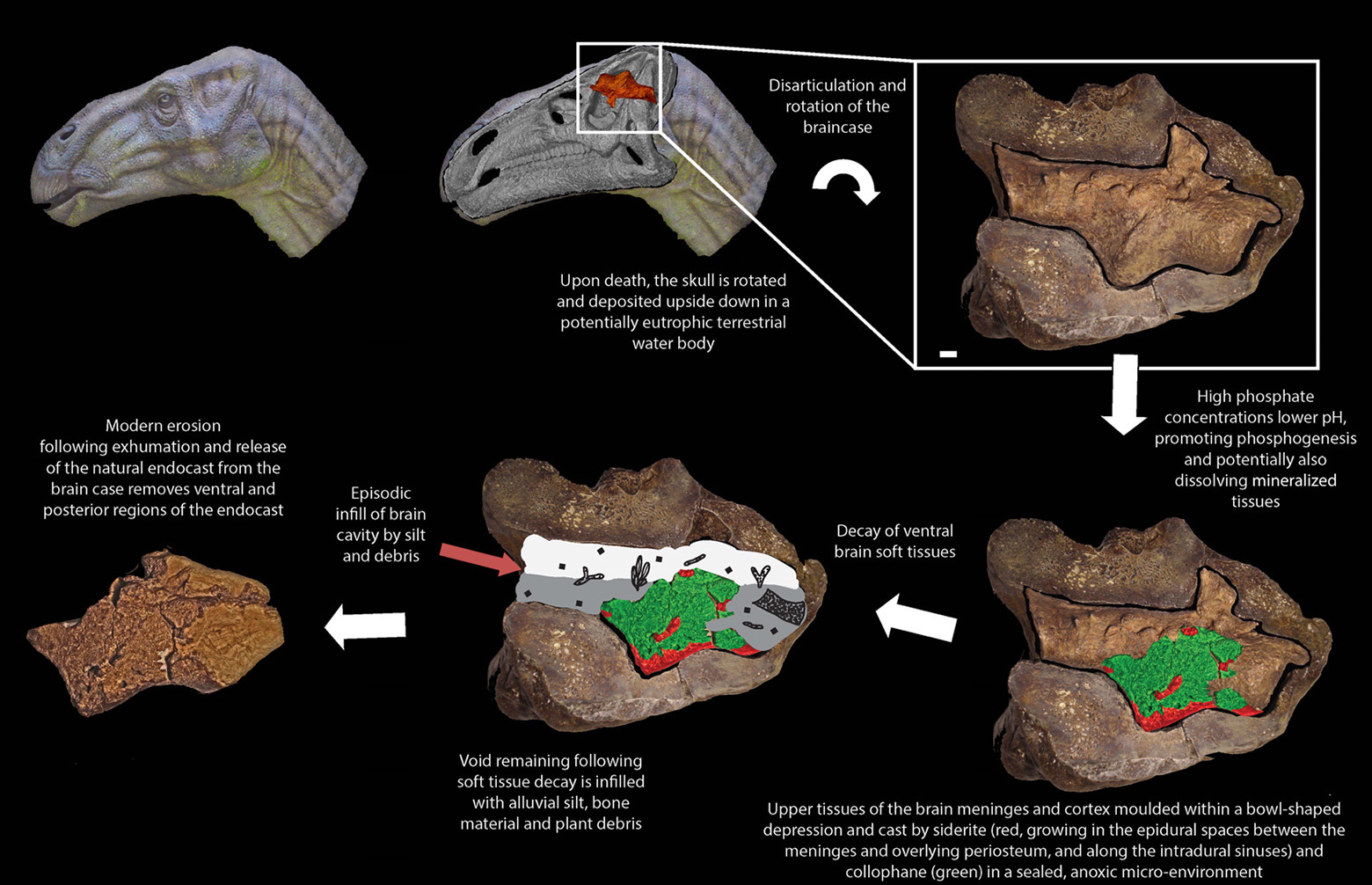Dinosaurs could be smarter than is commonly believed. Iguanodont's fossilized brain examined under a microscope

The brain and its location are schematically indicated against the background of the iguanodonts head.
The soft tissue fossils of some ancient animals have been studied in great detail. There are samples from all over the Phanerozoic (it started ≈542 Ma BC, is still ongoing). There are even samples from the late Neoproterozoic, which preceded the Phanerozoic. Scientific discussion of the structure of soft tissues and the brain of ancient marine invertebrates has become commonplace. Fossils of vertebrate soft tissues, and especially terrestrial, are quite another matter. That's great rarity.
Among these rare finds, the fossilized remains of the brain are considered the most valuable, because the soft tissues of the brain are very unstable in nature. By and large, we know almost nothing about the brains of ancient vertebrates, who lived half a billion years ago. How developed was the brain and how was it built? Scientists obtained these data mainly from indirect sources, and not as a result of observations.
Such indirect sources were comparative anatomical studies of closely related preserved taxa, the study of the insides of petrified skulls — the endocrane , that is, the relief on the inside of the cranium, the reflective pattern of large furrows and convolutions of the brain and, in some cases, large vessels. On the endokran, conclusions can be drawn about the shape and structure of the brain using 3D reconstruction. For example, see the work of Kurochkin and colleagues in 2007 on the study of bird brain from fossils found in sediments of the Melovatka-3 section in the Volgograd Region (Russia). This is one of the most detailed scientific papers on this topic in world science.
')
The discoveries of fossils of ancient terrestrial vertebrates with an endocrane are rare events in their own right (rarely the inner skull relief is so well preserved). But scientists have never succeeded in obtaining a fossil of soft tissues of the brain of a terrestrial organism.
Surprisingly, despite the actual absence of the object of research, scientists have spent a lot of effort to study the brain of dinosaurs in the skulls. The first well-preserved dinosaur skull was found in 1871. After 26 years, scientists have studied in detail the iguanodont's internal organs , trying to determine the functional parts and the structure of his brain. Iguanodonts are the herbivorous bird-and-thaw dinosaurs that lived in Europe and other regions 140–120 million years ago. Including in the territory of Russia, Ukraine and Belarus.

Iguanodon skeleton in the Bremen Museum
In 1977, David Norman studied in some detail the structure of the iguanodont's brain on the endocrane, with details of the morphology of the circulatory, nervous and vestibular systems.
At the same time, scientists were inclined to believe that the brain pressure on the skull in adult dinosaurs was low. This means that the internal shape of the skull was formed in them at an early age, when the skull does not keep pace with brain growth. Accordingly, the studies carried out and the above mentioned studies of the endocrane are more likely related to the undeveloped brain in its early stages. In an adult dinosaur, figuratively speaking, a small brain can hide in a large skull, and the rest of the space is filled with other contents. At least, until now there was a widespread image that dinosaurs had little gray matter in the brain. Like modern reptiles, which have a thick protective layer between the brain and the skull. Experts have suggested that dinosaurs, too, may be so.
In 2016, scientists first gained access and carefully studied the real fossil remains of a dinosaur's brain . This is again the iguanodont. The sample was found by a collector on the coast in the vicinity of the resort town of Bexhill in Sussex in the south-east of England, in sediments of the early Cretaceous period (≈133 million years ago).

Finding brain fossils
A scan of the fossil using a scanning electron microscope revealed detailed brain structures, including meningeal tissues, blood vessels (including capillaries) and former external cortical tissues that belong to the cerebral cortex. In the fossils, they are replaced by calcium phosphate, i.e., collophane. This is the uniqueness of the find - this is the first sample in which even the hemispheric cortex was partially mineralized.
The whole process of brain mineralization is schematically depicted in the illustration. The bottom left shows a fragment of the fossil, which has been preserved to date. This is about a third of the dinosaur brain in volume. The green color corresponds to collofan, red to siderite, that is, iron carbonate, also a material of sedimentary origin, it is often found in limestone.

According to scientists, the dinosaur's brain was preserved so well due to the fact that before mineralization it was marinated very quickly (salted). Perhaps the dinosaur fell into the water after death, and then its skull was stored in the bottom sediments of the river or lake.

After examining the brain tissue fossils, scientists can say that this iguanodonte does not have such a thick protective layer between the brain and the skull. Its protective membranes are only 1 mm thick. This means that in dinosaurs, the brain fills most of the cranial space, much like modern birds.
In addition, this means that the iguanodont had a much higher intelligence than previously thought, if the relative brain volume corresponds to the level of mental activity of the animal.
True, there is a possibility that under the influence of gravity, fossilized remains could flatten the protective membrane, so for complete confidence in the higher intelligence of dinosaurs, it is advisable to find other samples of brain fossils.
The scientific work was published in the London Geological Society (doi: 10.1144 / SP448.3, pdf ).
Source: https://habr.com/ru/post/398739/
All Articles